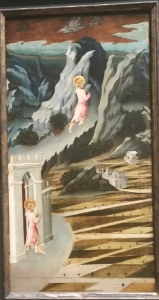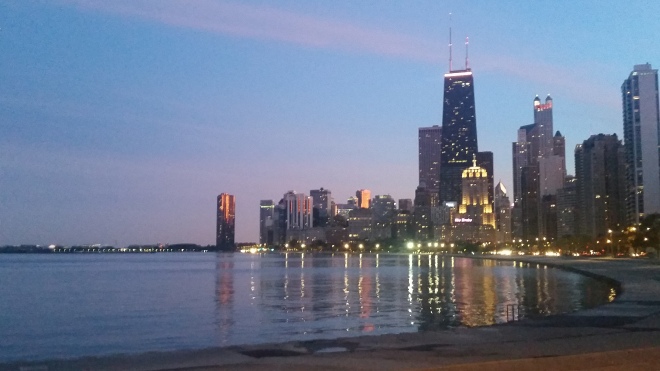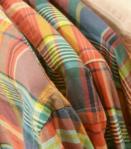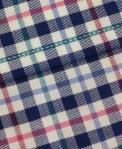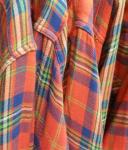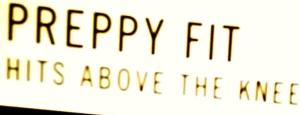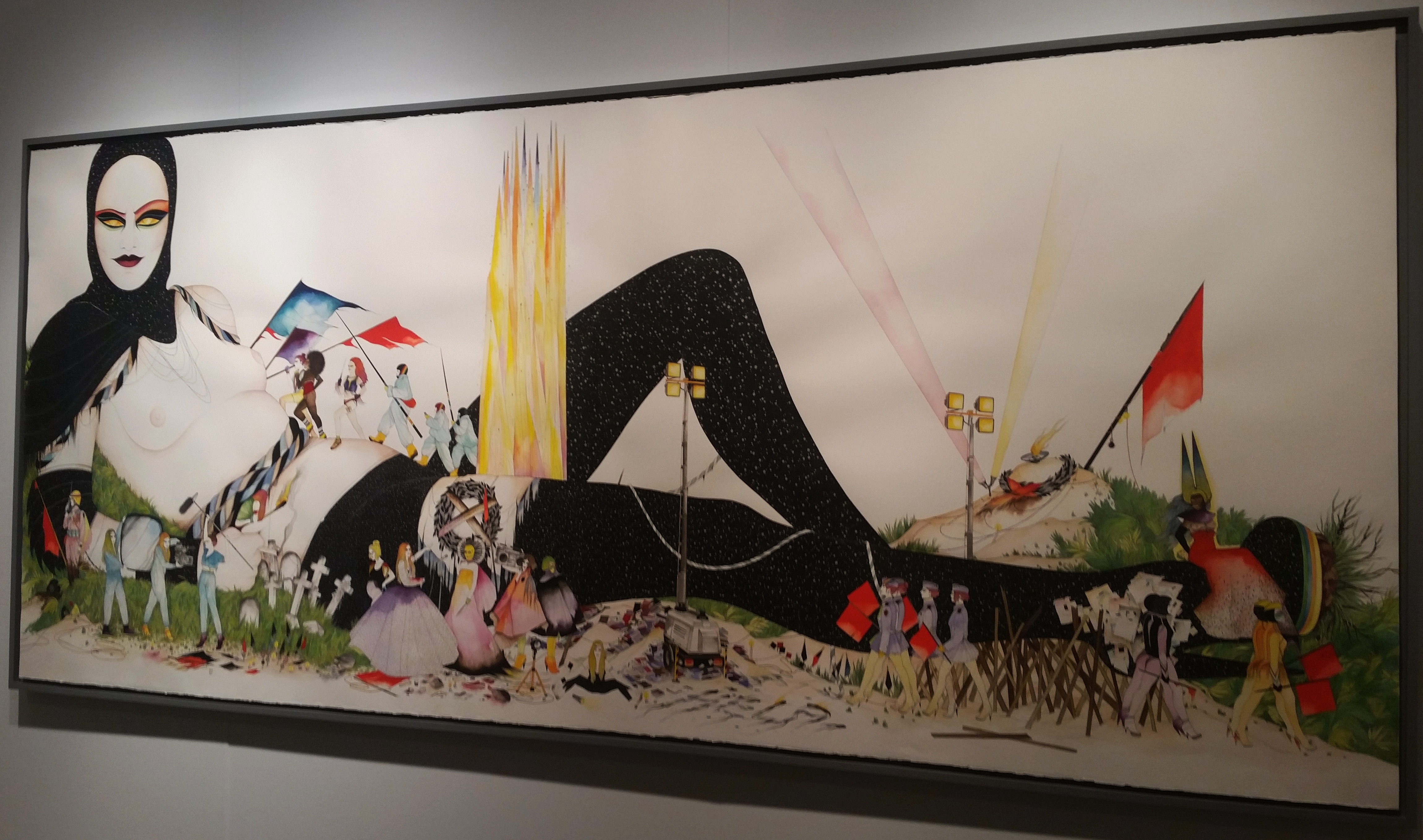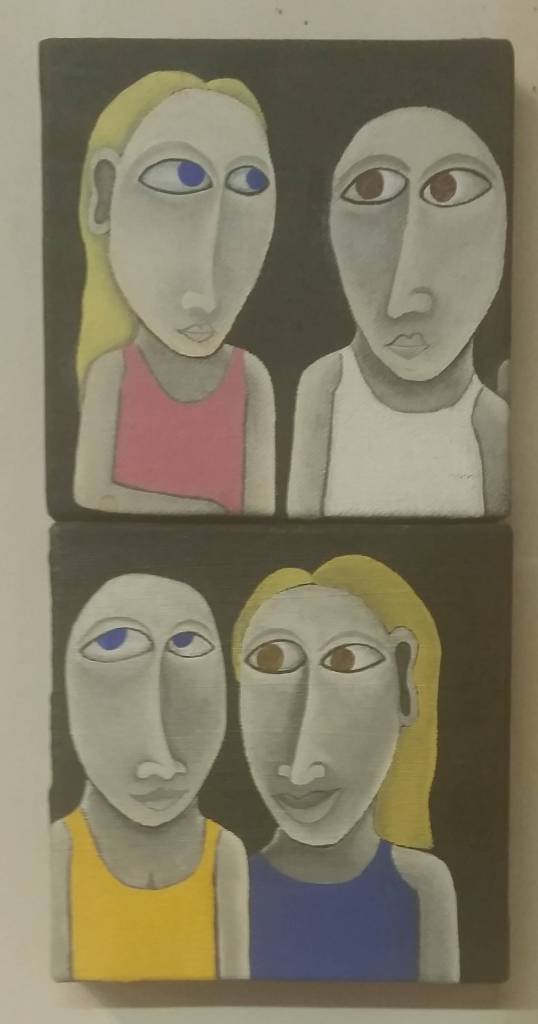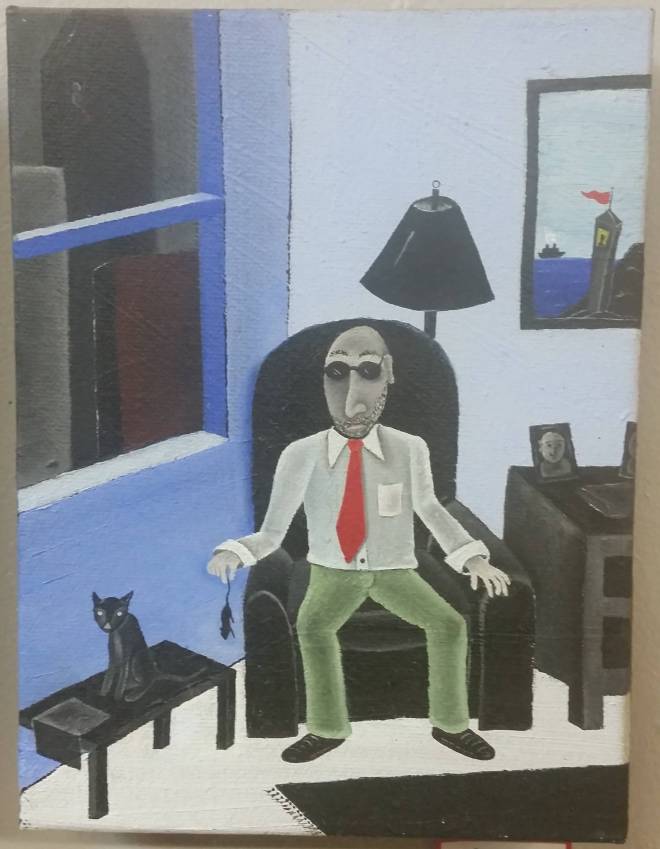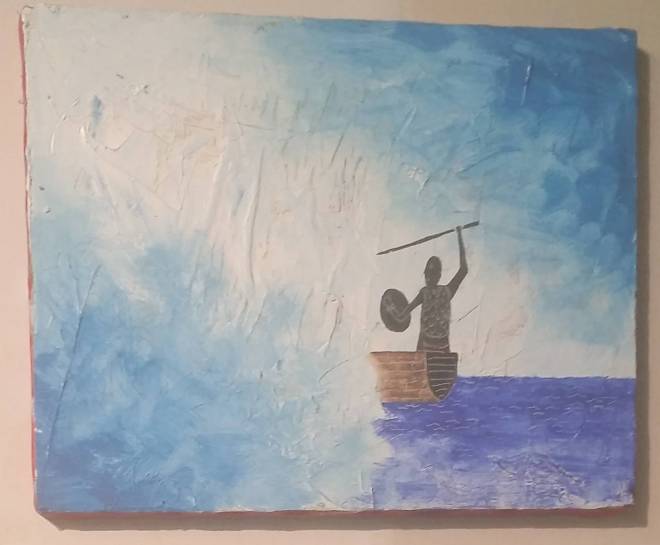Chicago has been written and overwritten, yet the places do somehow steadily remain. Here is a bit of pushpin remembering, peering through the cloud veneer of the present and to hash out where exactly the glorious Past happened.
My map is incomplete — I have not yet located, for example, Robert Ebert’s address, or Sun Ra’s. Please contact me if you have juicy points of interest that I should add to the map. If you click through to the map, you can see the full menu list of historic sites / “star map” home sites and locations, from Mohammed Ali’s home to Martin Luther King’s apartment to the Marx Brothers childhood home.
Be Your Own Bank: The Upside of NFTs and Cryptocurrency for Artists and Musicians
“A piece of cake is a can of worms” — Mercer West
Like so many others, I am high on non-fungible tokens or NFTs (“nifties”) in recent weeks. I am hopeful this technology can make the world a better place.
I write here for myself (to organize these many loose thoughts) and for other artists, musicians and creators curious about the NFT fad. I will focus almost exclusively on the perspective of NFT creators as artists and musicians, but this is misleadingly only a very small piece of the greater blockchain phenomenon. I encourage the reader to dig deeper from here, think critically (everybody’s got an angle), and please also educate me where I am wrong or ignorant in the comments 🙂
Gauche Optimism about NFTs
The NFT world I speculate about has not yet quite arrived yet, and it may never. The following may only be a fantasy, a wish-fulfillment story. But this act of imagination — the glorious benefits to artists, musicians, and society — can make a step to actualizing those benefits in the real world. It is worth dreaming about.
Being optimistic about technology in our debauched timeline is in poor taste. The technocracy has earned the public’s cynicism about its intentions — we have seen the bad side effects and have learned we should not trust Big Tech. We see AirBnb drive up the cost of urban rent; we see Uber and Lyft as schemes to transfer money from labor to capital (the value of a driverless future added to ownership, subtracted from drivers); we see employees transformed into “contractors”, with no benefits and few labor rights. Old moneybags Google continues to be a total creep, peeping into our windows, following us everywhere and scribbling it all down to sell to another skeev. (Hey Goog, maybe you should engineer yourself some class and get a business model where you don’t have to be a peeper!) We have seen the Facebook algorithm radicalize the American terrorists and then collect money advertising body armor to them. This is not even to mention Amazon and many other rogues.
Before the ’90s tech bubble burst, it was easier to swallow an optimistic (if not end-of-history messianic) narrative about technology where the decentralization of the Internet could liberate the people from historic forces of oppression. In 2121, where four giant corporate monopolies (“FANG”) rule the Internet, the possibilities of the digital frontier appear greatly constricted. Any “advance” in technology seems only to benefit the monopolists and their financiers. NFTs and blockchain, however, take me back emotionally to those early days of the web, where something truly new and positive seemed possible.
What About the Environmental Cost of NFTs
How could I blow a big cloud of happy words about NFTs before considering the environmental impact of crypto? You cannot ignore it. This is the end of the conversation for many people — they hear cryptocurrency is a disaster for the environment and oppose it and hate it. No dumb digital dingus is worth destroying the planet, even for a tidy profit.
Ethereum is the primary blockchain for NFTs right now and it uses a whopping amount of electricity. It is not intuitive that what seems like “saving a file on a crypto-server” could consume a day’s worth of energy use, and most ethereum NFT marketplaces are not especially forthcoming about the true cost of creating or spending money on their chain. Many artists would not be using Ethereum, or at least using it so flippantly (i.e. minting extremely large editions of NFTs), if they realized its energy cost.
Some can justify the energy cost, but I will not. It is ugly decadence to use such energy on a NFT. That this potentially revolutionary tech was engineered with this fatal flaw and already has achieved such wide adoption is sickening. I recognize that this continuous electricity has created and also stores a lot of value, but obviously it’s inefficient and not sustainable or scalable. Couldn’t you spend a day’s worth of energy and create something of more value — like a bunch of bricks, or at least like 10,000 NFTs for the energy instead of just one?
The environmental footprint of Ethereum (and other old blockchains like Bitcoin) is real and should not be minimized. But it is not at all necessary to use energy irresponsibly to mint, own or use cryptocurrency. To mint a NFT on Tezos blockchain takes as much electricity as a Tweet, less than 1/1000th as much electricity as Ethereum and at a small fraction of the cost. (These numbers are coming from here.) There is no energy-intensive “mining” on Tezos or similar blockchains (Ethereum is also supposedly moving in this direction). It uses energy but not in an insane, unconscionable way. The old blockchains are like leaded gas: harmful, unnecessary, obsolete and begging to be kicked out of the market.
Even if NFTs of the near-present are eco-friendly (Tezos!), the continual downplaying of the energy use involved in these early blockchains feels like we got off on the wrong foot. From the fogs of the mind steps a dodgy character — it’s our libertarian tech bro slum lord. This personification has violated our trust again. We have learned the whole ghastly league of these devils will be willing to mislead people about the sustainability of their tech, to sell magic elixir vaporware, and to unreasonably exploit the planet for short term profit. So maybe that’s a solid reason to be against NFTs.
But it is already possible today to enjoy the benefits of NFTs and cryptocurrency without being a huge asshole to the planet. The future of crypto and its mass acceptance will happen in an eco-friendly format.
The Glorious Benefits to Artists, Musicians & Society
So granted: cryptocurrency is new and scary. It could all be a giant scam, or a bubble will burst splattering everywhere, or a scheme for oligarchs to steal even more control, or maybe the government will somehow crush it, or maybe the next gen blockchains gush nuclear waste they’re not telling us about, or maybe its unbelievably unethical because of twenty other things. But I think it could revolutionize income for artists and musicians. That sounds too good to be true. I realize people were once convinced that Communism was going to be a great humanitarian venture, too. This time it might end well?
For almost all artists and musicians, NFTs could mean getting paid well, or at least way more than they ever have. This is in part a commentary on how little income many artists and musicians generate with their art. Many talented artists could hardly be paid worse (Spotify pays musicians, on average, $.0038 per stream), and they assume the costs of their art out of pocket. They must depend on other “real” jobs for income and have learned to not expect to ever be able to earn much money with their art. Most bands are delighted to break even, most artists are not trying to hustle rich collectors. Artists know that compensation for their art is usually mostly non-monetary. In some senses to value art in money at all is absurd — it is just not the point.
It’s not about the money but, harsh though it may be, in this world artists must pay the piper. Money is useful to them. If artists can generate income with NFTs, so much the better. Even a relatively small amount of new annual revenue of, say, $1,000 would meaningfully defray costs of studios, practice spaces, coffees, and materials.
If the income from NFTs is substantial, it could liberate some people from a lifetime of folding napkins or re-stocking beer. Countless talents are locked away in hopeless bullshit jobs. What if people could afford to put those hours into their art practice? Income from art would incentivize the creation of more art; artists would be better able to afford the time and costs it takes to make art. With more practice, maybe they would deepen their visionary powers and truth-telling states? And all of society could then share a rich flood of fresh good art, with its powers of humanizing, healing, challenging, creating community, bringing beauty and joy. We could enjoy a renaissance.
Yes that would be lovely. But from what evil fountain does this wonderful money flow?
The Evil Fountain
The digital widget you are selling, this NFT, is not quite the copyright of the art (this is a whole other nuanced conversation) but the thing itself. It is a token with the art (or music or other digital content) colored in on the face. It is a chimera beast: part coin, part contract, part digital content, part artifact. Engraved into the blockchain with an aura of permanence.
A painter mints three copies of an NFT of their painting. The painter gets the money from the initial sale of the NFT paintings, say $50 for each of the three. The new owners of the NFTs may then sell them to other buyers — money and objects transfer directly peer-to-peer easily within the system. Every time the NFT is resold, the issuer of the NFT automatically receives a percentage of the sale (commonly 10%). A NFT can trade hands hundreds of times, and each time it sells the issuer receives 10%. The NFT could increase in value to $10,000, and each time it is sold at this price the issuer would receive $1000.
For the coin’s issuer, a NFT can generate money initially and continue to generate income forever. An NFT issued today could still be paying income to an artist in 30 years when they retire (in this fantasy NFTs will still exist, musicians and artists will be able to afford to retire). In the real world, when an artist’s original art is re-sold by a gallery or investor for fat stacks of dollars (a work that was sold by the artist early in their career for hundreds), the artist is not getting a paycheck. With non-NFT art sales, the artist does not get cut into the big money (if it ever arrives) or receive royalties, despite being the source of the thing that had become so valuable.
The royalties on NFT sales could benefit artists with long, storied careers. Cult favorite musicians or bands are often re-discovered by later generations or hailed late in life as living legends. Such recognition, while surely appreciated, will not pay a musician’s dentist bill. If the band had issued NFTs early in their career, a critical rediscovery of their music could mean increased valuation and trades of their coins (new fans patronizing their hero), turning that fan love into something materially beneficial for the musician.
Why Would You Turn Real Money into Funny Money?
Some people that buy NFT tokens will strictly be investors, expecting the value to rise and to then flip the token for a profit. The NFT collector / speculator is something that shocks people to the point of being offended here in early year 2121. NFT art collectors are dropping mega-millions into the form of NFTs every day, spending as much on an animated gif NFT as a house. Can you imagine the gall to store so much personal wealth in this form? Can’t they see how post-modern and transparently fake it all is? Annoying though it may be, at the moment it seems many NFT speculators are getting rich quick.
(If investing in NFTs makes so little sense to you that you feel personally insulted, please stay away from NFTs. Savor the day when all the dumbbells that bought a magic nothing stored nowhere lose their investment and you were right all along.)
As a safe investment with reliable returns, let’s just call NFTs suspect. Some people predicted the Beenie Baby bull market would never end. (Note: I am not a financial advisor, or particularly successful at business.)
But NFT buyers don’t have to be greedheads lusting for unreasonable profit. They can buy and exchange your cryptocurrency as a collector, or altruistically as a way to support you and give you income (similar to people buying tickets at a church carnival or “Chamber of Commerce” bucks). They can value your coins sentimentally (one person’s “worthless” is another’s “priceless”).
In theory all parties can profit from the arrangement. A young band can issue NFTs to early fans and supporters, and use the money to finance a recording. The increased recognition brought by the recording can increase the value of the NFT, so the early investor can sell it and make a profit. The NFT buyer both gave meaningful patronage to a band they like (the band making money on the initial sale and also the re-sale of the coin) while also storing their own wealth in a form that appreciated in value.
Maybe you buy NFTs from all your favorite bands in your local music scene. Some bands might break up prematurely (potentially decreasing the value of their NFTs), others may achieve great levels of popularity (increasing the value of their NFTs, which are always limited edition). After a few years you sell your band portfolio to recoup your investment costs. At worst, your investment is not profitable but your money has been used to pay all your favorite musicians in your scene, and probably you have enjoyed improved quality of music in the scene. If an entire community of music fans invest like this, the local community of musicians could possibly make living wages and create so much more excellent music with their time.
Storing Real Capital in Social Capital
Music is the soundtrack to moments of deepest human love and soul. It does magical amazing things, and people in turn love artists and musicians for the gifts of their art. Artists are people’s heroes — they show people different worlds, and embody heterodox values, attitudes, and ethics. Artists that are highly valuable to people are not valuable in money terms, they are valuable in “social capital” — in respect, social regard, appreciation, love.
Cryptocoins are not inherently valuable — they do not do anything, and anyone can make them for very little cost. What makes them valuable is a community of buyers and sellers agreeing they are valuable. What they are worth is whatever someone is willing to pay for them. If nobody wants to buy a token, it is worthless (at least for that moment).
The “social capital” of valued artists and musicians can make their currency desirable and thus valuable. Anyone can issue their own cryptocurrency, but not just anyone has the social capital to get people to invest in it. The authenticity and specificity of a favorite artist is not easily reproduced — you can imitate the Ramones, but you cannot forge them.
Distinct from selling merch or swag, selling NFTs in effect means a band or artist becomes a bank, issuing cryptocurrency (with each NFT as its own coin). People can take their savings and “save” them behind the seal of an artist’s brand. The social capital of musicians and artists stores actual literal capital in the form of cryptocurrency.
Is It Punk to Be Your Own Bank?
Finally, your favorite underground band can become a lot more like Chase Bank! This might seem like a complete nightmare. Finance, banking, the stock market are ugly things, and many artists are reluctant to be associated with such dubious enterprise on both aesthetic and political grounds. NFTs could be a Trojan Horse for Finance to commoditize artists and musicians and rob their souls. Rather than being jailed in an unjust economic system, the inmates are hereby paid to become the jailers, earning a commission to extend the front lines of capitalist oppression.
But must money always be the root of evil? Don’t non-capitalist or non-evil economies use money too? Maybe if you take the money out of a bank and put it in an artist’s NFT the money could have less potential for evil?
Crypto may yet create its dystopia (and damn me for dreaming about it positively here), but I imagine that cryptocurrency could bring a revolutionary swing of power from wealthy institutions to common people. NFTs create the freedom to withdraw wealth from banks and Wall Street and invest it (or “save” it) in artists, musicians, and countless other unconventional formats.
The growth of investment in cryptocurrencies comes not in isolation but relative to dollars, stocks, real estate, and other formats where people can keep and grow their wealth. You must “store” your wealth in some form. Owning your wealth as a $100 U.S. note with Benjamin Franklin on the front is to patronize the Federal Reserve, the private coalition of banks with a monopoly to print greenback dollars. This bill (a competitor with NFTs as a format to store wealth) will reliably lose value every day you hold it.
Keeping wealth in a bank account benefits the bank, keeping wealth as a stock benefits the business, keeping wealth as real estate benefits other property owners. These institutions grow fat on the bounty of wealth they store. Whereever you choose to park your wealth (and, again, you must park it somewhere), it benefits other people to leave your money lying there.
Here where we love our property you get to choose what to do with your wealth — you have the freedom to convert it into whatever form you choose. You have the power to choose who benefits from storing it. Rather than buying a stock of Microsoft, people could buy a stock of their local arts community. This movement of wealth from the old savings economy to the new, which could happen on a very large scale, would be a revolutionary transfer of power. So maybe being the bank is a lot more anti-authoritarian, and punk, than it may seem.
People with leftist economics may yet come to love NFTs, in the tradition of people’s banks, infrastructure banks, and buying collectives. Democratizing banking could benefit under-banked people and reduce the control of traditional banks. NFTs could conceivably be used to keep capital within communities where capital flight is common (by issuing a neighborhood coin, with proceeds to benefit the community). NFTs open doors to pool and grow resources around common values, and invest money in non-financial instruments like wildlife preservation. It can be a format for communal money power.
This can also be used by other institutions that are valued by people but do not generate huge profits, including non-profits, charities, and journalism. For example, a magazine with fanatical readership of 50,000 could issue 100 NFT tokens. They can find 100 buyers to buy the coins initially, and another couple hundred buyers who would buy or invest in the tokens second-hand both to make a little money and to be “patriotic” to the magazine (as each sale of the coin sends money to the magazine). If the market is steady and the value of the token is good, outside investors may want to introduce their money into the fund, even if they don’t read the magazine.
Cryptocurrency may come to be owned only by the elite, but NFTs are not an elitist medium. To create NFTs requires only a little knowledge, an internet connection and a few pennies (don’t use Ethereum!) — this is accessible to almost all people. This is a much less elitist path to a career in the arts than traditional avenues like having a successful parent in the industry, a $200K art school education, an unpaid gallery internship in Manhattan, or a trust fund willed to you at birth.
In Conclusion
There are many potential pitfalls for NFTs, as the negative parts of human nature come to bear on it. It will be a medium for creative new frauds and thefts. People will lose all their life savings by investing foolishly. The profit motive could corrupt the art, with artists pandering to their audiences to make money. The emphasis on social capital could lead to a world drowning ever more in influencers and personal branding. “Tokenization” of everything could turn countless more weird things into disturbing commodities, easily bought and sold in a liquid market.
Artists and musicians, though often poorly paid, can afford to have integrity. They don’t have to “sell out” to be part of a system that will exploit people or that does a bunch of stupid horrible things. But if NFTs do not hurt people or the environment, they could prove to be a revolutionary force for good.
Plato cast the poets out of his Republic, because they were liars. But I love the idea of a whole generation of artists and musicians fed well and giving back with art that will make society wiser, more spiritual, more connected with other people, more emotionally in tune with their inner world. I like the idea of the surplus treasures of civilization’s work day resting idly in the pocketbooks of artists. We should never let another Herman Melville spend decades in the customs office instead of writing priceless fiction. If we can use non-fungible tokens to push artists toward the center of our society, history will remember us for it and drink toasts to our memory.
City of Grass, City of Wrong Rooms

This dark labyrinth city was a city of some other things before. It was a city of grass and a subterranean city of prairie grass roots (weighing more than a forest of full-grown trees). A city of birds honked off in the vast swamps and congested the dunes with their traffic. The land would burn regularly, rejuvenating the grasses and smiting their enemies the trees. So for millennia it was a city of smoke — the pioneers knew the region by its blue haze, puffed into the horizon by huge fires blowing through the combustible land.
Once it was a city of wood. The archeologist of the future will kneel in the city’s ruin and not read signs of this city, Old Chicago, Chicago One (ordinal to the Second City) — the city of before the fire of 1871. The places that 300,000 people knew as home are entirely vanished from the place today. Old Chicago does live, but as a mute ghost in a loud city that does not abide ghosts.
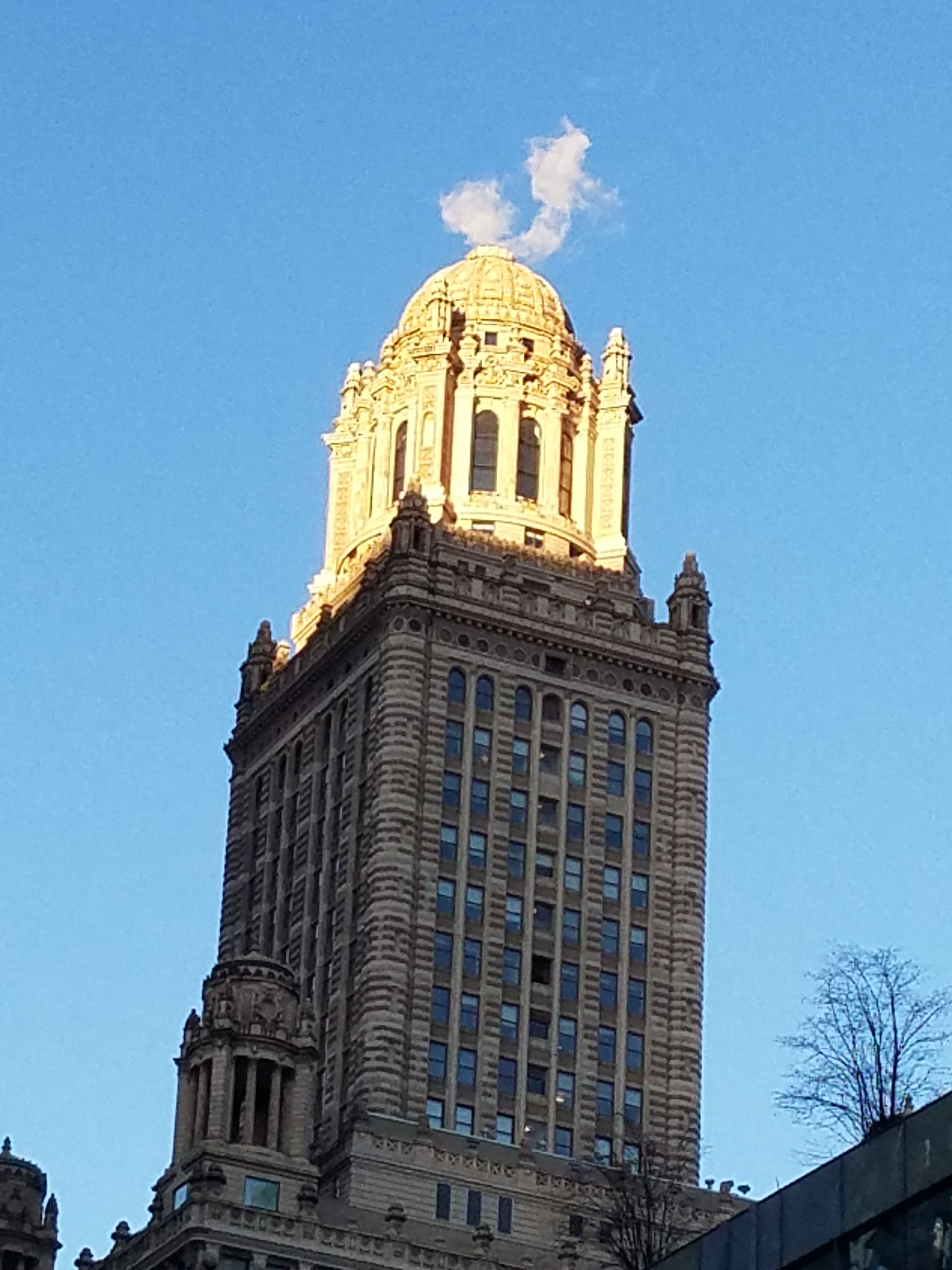
Now when people think of the city, they think of buildings– it is a city of stone buildings. The city is wealthy with buildings, most of them dreamed up and built by people long out of the picture. The buildings make an inheritance from people of the past that rolls down generations, as inherently valuable to modern people as the ideal cave would be to the people of pre-history. The exteriors of buildings symbolize the city; the shape of the skyline makes a word for the city. But the exteriors of the buildings more truly symbolize the interiors of buildings. The interior of the building is where the city really happens, and on a scale that overwhelms imagination.
It is a city of rooms. For generations the people have been building rooms and traveling back and forth, from one set of rooms to the other — a certain number of rooms available to each person, one room seemingly not so different from another room. The people have been buying their way into some rooms and working their ways into others. They have been searching to find certain rooms. Sometimes they have accidentally found themselves in the wrong room — and why shouldn’t they, living amid a backdrop of so many millions of wrong rooms?
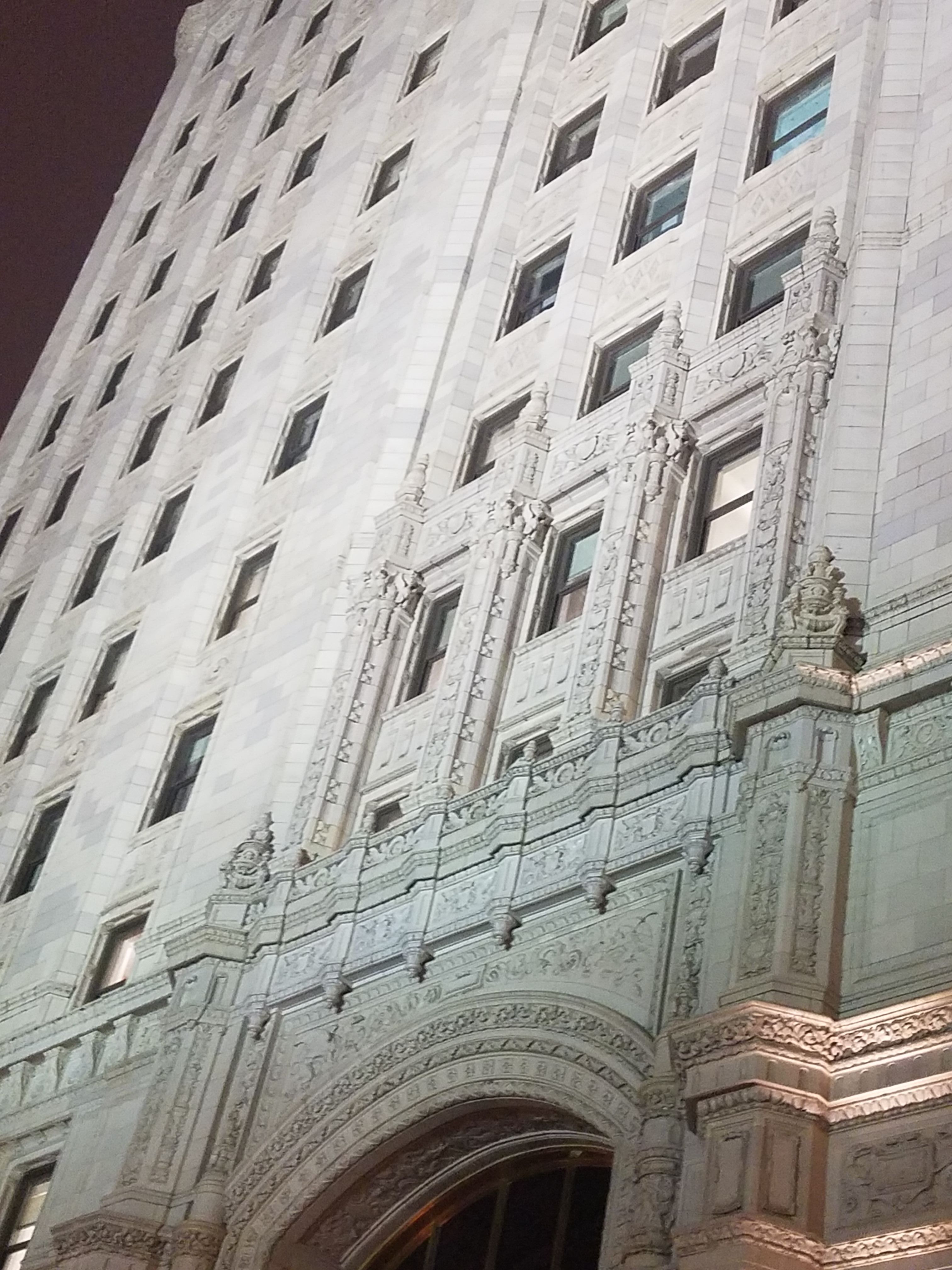
The Outer Edge of Silence
 In small town Vermont during witching hour of a still night you can hear certain quiet sounds happening just outside silence. You will expect that the open windows of town would coarsen the near-silence with yelling, sex or T.V.s; the quiet would seem delicate and immediate like a lamprey ashore. But you will hear only silence, and then the abstract sibilant hush of the river. When there is wind you will hear leaves brush on leaves.
In small town Vermont during witching hour of a still night you can hear certain quiet sounds happening just outside silence. You will expect that the open windows of town would coarsen the near-silence with yelling, sex or T.V.s; the quiet would seem delicate and immediate like a lamprey ashore. But you will hear only silence, and then the abstract sibilant hush of the river. When there is wind you will hear leaves brush on leaves.
Night after night of these quiet noises near the edge of silence and it becomes routine. You hear it better as you continue to listen to it. When it goes especially quiet your ear will lean out to listen.
The windows of town open to bring the silence in. The people of town, frowning and isolated, share the silence like a stranger’s towel. They listen to the subtle ambient sound above the silence, a quiet guardian levying back true silence (like the black silhouette of the mountain, a presence passing for an absence). Church bells toll hourly through the night, protecting people from silence, the tonal vibrations peeling miles off through the sleeping land.

Chicago, of course, does not enjoy charming provincial silence. The banshee white noise waves of the El, which physically shiver the buildings along the tracks, afford a broad berth of public noise. People of the city understand that other people must break off their piece of the common silence to curate with their important select noises. Civilization demands incidental noise.
A block south of Humboldt Park and two stories up: my old bedroom, painted with stripes. I had leaned a microphone out the window, cranked up the signal, and listened eyes-closed on headphones to Chicago MUCH LOUDER. The bark of squirrel, a plane, cars, distant Spanish, a percussive churn of weather. Much was going down in the din. Listening to and recording the din of the city briefly became my main hobbyhorse.
One godforsaken night I was listening out the window to the sound shortly before dawn. Here was the city as near to the outer edge of silence as it gets: to my naked ear, it sounded like silence. I immensely amplified the silence and heard the noise next to it, roaring into the headphone speaker right beside my ear.
The sound: a nasty low polytonal HUMMMMMM, a synthesizer patch of the composite sound of millions of people asleep.
After listening a moment to this outrageous noise revealed at the edge of silence, I slipped off the headphones. Now I could hear it– in what had seemed like silence to me a moment before, I could now hear how loud this noise was, this noise which screams out to Chicago in its quietest moments. Chicago silence is actually the sound of this weird loud noise.
This quiet local noise is always audible and distinct but generally loses out on our attention to louder, more prominent sounds and sensations. It is camouflaged by its monotony, relentlessness and subtlety, normalized like a color filter on a camera lens. The noise at the edge of Chicago silence is blasting an entire band of the sound spectrum out of our ears; it probably alters the way that music itself sounds inside Chicago city limits.

Falling to Medieval Unconsciousness
I had smacked against the cliff face of shore (my body folding into the rocks like batter) and there have lain sleeping under arcs of orange and lavender atmosphere in the stone city labyrinth named CHICAGO. In my dream I kneel at a molten river, fingering the lines of current, wandering back in time.
The earth of this twisted city is frozen shut with asphalt. It does not liberally let roots through. The people must spend their lives distributing their weight among the stacked rocks, hammering stakes and lashing down their legs to withstand the uncertain violence of the weather. Fingers run white holding their grip. The land would seem to repulse life, pushing it up into the sky, which is the mystic glowing city sky, which shoots orange and lavender on the river water and blows a colored smoke into the glass, filling people with abstract visions of the Middle Ages.
* * *
Medievalness of mind: it appears in the form of a shadow (a coldness, darkness, an alluding shape of light), an atavistic consciousness of true memory from beyond experience, or a false memory. It is a highly selective projection, a personal, contemporized, Crichton-ized Medievalism, bleached of feudalism, Christ, and horses: a loose goo with some edges filed into reactionary vividness against the present times. For these times, it must be a boutique Medievalism.
A medievalist might be a hopeless reactionary, an anachronism to the point of parody. Ignatius Reilly of A Confederacy of Dunces: cranky, deluded, and ridiculous (a ridiculousness that projects him off the surface of the real world, and protects him from harm). Post-modernity likes the improvised jumble of Chicago without the liquor of omnipresent rock-hard religion; old blind Money persistently prints out contemporary shapes and circumstances and coping with that will be enough. Here is the pastoralist in an engineered landscape bent into a fractured shape of millions of humans — the Chicago road arrow straight, the Medieval road roving with the wisdom of the walking cows. The modern Medievalist would almost have to be a buffoon.
A parodic Medievalism: actually, doesn’t that seem post-modern? Chicago’s signature frilly Beaux-Art aesthetic (directly influenced by Victorian-era resuscitation of Medieval decorative art) and subconscious Francophilia paints the scene for such a farce. Modern people’s fetishistic mythology of the organic lifestyle, perhaps, will be understood as a parodic yearning to become the Medieval person, the original “natural person,” a human synonym of the soil they tilled. The Medievalist Chicagoan appreciates the local, the romantic, the hermetic, the folk decorative, the artisan, the arts and crafts, the freedom hidden latent in hands, the importance of community in work, the importance of spirit in work.
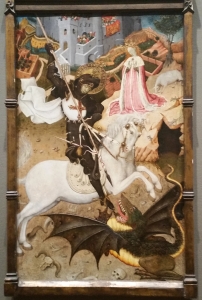
John Ruskin, iconoclastic Medievalist aesthete and key figure in the late-19th century relaunch of thinking about the Middle Ages, would see the Medieval tradition alive in the Chicago underground DIY music and arts scene. With castle gates to somewhat fend back the world, the artists establish their own order, leaning their own communitarian values as pillars against the prevailing values of the world. (And there is Ruskin in his time, jealously imagining the ordered fraternal spirituality of the Middle Ages against the bleak alienation of early industrialism’s factories frivolously eating generations of people.) Medieval art is art put to the service of religion, politics or society, rather than as an outlet for personal expression or for its own sake (a Renaissance sensibility); DIY Chicago uses art and music to bring people together, make love, create community, and (to some extent) engage with and change society. Some modern artists and musicians after the Medieval strain make spiritual art as healing antidote to the Age — and while doing it feel “out of time.”
20th century events trephinated Western heritage, blotting out pieces of the Enlightenment brain (such as conventions of visual representation and devout progressive rationality); a musty Middle Ages mind leaks out, scabbing over the wounds as generations peel off in the night.
A powerful image of a Woman opened the door of my Medieval unconsciousness. Time marked by, the Woman mystified and possessed me. In her realm she would rub a lamp and I would be compelled to appear. I was a genie made from magic yet before her enchained. Then I was bellowing monophonic music in my heart, quilling low verse, and making crude vernacular paintings. Then I could effortlessly spend the duration of my life dragging stones in her honor, then I sought a quarry. The very trace of her compelled me.
I reached for the weird words of Henry Adams, Mont St Michel and Chartres. Writing in 1904, Adams surveys the immortal glory of 12th-century French Gothic architecture and concludes that the forgotten secret to the success of Medieval civilization is its worship of Woman. Adams describes a spiritual interregnum, a brief golden window around the 1100s when the old White Goddess (“the eternal woman,— Astarte, Isis, Demeter, Aphrodite”) ruled again, costumed now as the Virgin. For Adams, this deity built the great cathedrals. The form of the Virgin gave Medieval people an alternative type of consciousness (lost in the patrimonial smog of his times) — an enlightened ideal feminism, where sex and the irrational were admitted in the Church’s front door. For a brief moment, Woman was the ideal, the superior of men, and at the center of the social order. Adams, holding the sculptured light of Gothic Cathedrals beside the Science then discombobulating his world, ultimately concludes that “the proper study of mankind is woman.”
Modernity, with emergent feminized consciousness, probably has renewed access to an occult Medieval type of apprehension of and engagement with the world. The rich meat of the Middle Ages is its soul: the Medieval world is the ensouled world, anima mundi, where goes systemic social purpose (the elements of Medieval society in purposeful Cosmic interrelation, unified under the boot of their God) streaked with sunken magic symbols (as Roger Bacon’s semiotics, 600 years before Peirce or Lacan) rounding a Boethian Wheel of circular time (relieved of linear time’s mythology of progressive growth). Many vernacular institutions have gone dormant in our time, but soul does persist and we also still have love, the classic gushing love that fuses. Post-modern people dream of the ensouled world of the Middle Ages, and still live in it.
“When a man undertakes to create something, he establishes a new heaven, as it were, and from it the work that he desires to create flows into him… For such is the immensity of man that he is greater than heaven and earth”
— Paracelsus, Middle Ages occultist and psychosomatician
The Aesthetic Aftermath of Halloween
The Mag Mile Menswear Minute
Seven escalators up: MENSWEAR: End of the line. It seemed then as though a foggy breeze blew through the department store, but no, that could not be possible.
I was on a semiotic journey to the heart of modern Midwest menswear (as to the source of the Blue Nile, a river whose waters I could taste downstream in the thrift stores); I weaved through the gilded strip of clothiers on Michigan Avenue. I was disguised as a customer (hidden behind a mustache, severity of aspect, a polyester outfit) though I had no desire to buy or even wear the clothes I saw. Brooks Brothers, Abercrombie & Fitch, J. Crew, Express, Banana Republic, The North Face, Bloomingdale, The Men’s Warehouse, H&M, Ralph Lauren, Macy’s. I drew their fabrics to my nose.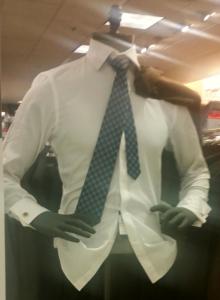
Many are the threads of text in the textile of 2015 haberdashery; let us first look into the image of the clothes, before clothing them in the wet shirt of their world.
What were these modern clothes?
Suits, ties, dress shirts, casual shirts, t-shirts, distressed jeans and colored chinos, leather jackets, faux fur hooded down-filled coats, hoodies, cable knit sweaters. Banded collar shirts (as seen in the 1990s office) are back at Abercrombie and H&M, but at least now they can be ironic or post-ironic. Haberdashers agree on cotton; I did not notice any acrylic or polyester. I did not look at shoes.
What colors and prints are stores trying to sell men these days?
After a long “Summer of Stripes” where America was wearing stripes, the fall brings a couple white t-shirts with black stripes, but few other stripes. I did spot some paisley, floral print and even a polka dot sweater at H&M (polka dots are a surprisingly very rare men’s print). For men it will almost have to be plaid.
Perhaps it is a lingering lighthearted plume of summer that floods these stores with so many gingham plaid shirts? And in a rainbow of hard, vibrant colors. Men: rest assured it is totally mainstream to wear your purple gingham plaid shirt to a dinner out.
White, black, and blue tartan plaid lumberjack shirts were also general, in an omnipresent signature 2015 phthalo blue. A contemporary man also wears bright visibility orange — if you trust the opinion of Ralph Lauren, America’s top name in baggy shirts. He’s got about a million $400 orange cable knit cashmere sweaters to sell you.
Speaking of old man Ralph Lauren, I noted his big oxford shirts (fabric flaps in the pits like bat wings) shifting into a new, brighter, almost neon color palette. No vintage Lauren shirts have these colors; in fact they evoke the vivid color plaids (like bright yellow) of Chaps and Club Room, two cheap knock-off brands. I guess the modern office is ablaze in psychedelic madras plaids from freshly civilized parts of the spectrum.
(continued below …)
Where were the clothes made?
Modern clothes are made where people will accept the smallest possible wage. Almost all the clothes I saw were made in China, Vietnam, Bangladesh, India, Cambodia, or Indonesia. The free trade dreams of the ’90s New Economy walk the Earth.
How much did the clothes cost?
When I checked a price, I thankfully did not have a mouthful of coffee to spit-take over the rack of $350 coats. Button down shirts cost $70 – $125. Sweaters $200-$500. Given how seemingly cheap the production costs are (for example, made with cotton in China at $1 an hour, the physical part of the shirts should be almost a free, self-generating miracle), does the price of these clothes seem inflated?
I guess Brooks Brothers or Michael Kors takes the money they save via globalized production and shine their clothing with extra mythology (infused like a syringe of flavor juice into a turkey before deep frying), deepening the object with management and marketing, Gold Coast retail space, copy writing (exactly selected words for the little book with your sweater, the little spell book), ultra-contemporary signal encoding made by experts of modernity in Manhattan or L.A. (post-modern places where “the present” elsewhere is already the recent past).
The magic shopping atmosphere also massages emotions and attitudes into the clothing via clouds of Polo scent cologne, black and white photographs of Jack Nicholson and Robert Redford (this is you: wildly rich, accomplished, middle-aged, hot actress wife in one hand, cigarette in the other), woody environs. It takes one thing to make a shirt, and another to make that shirt mean something. These new clothes have a destiny (in principle, anyway) to graduate off into the world, and live on the bodies of the pedigreed class and culture of people that also wear (and thus can read / decode) such contemporary clothes.
Men are buying the text (the shirt), but are really paying for the context (how it fits in the modern world, which gives mouth to the shirt to speak its message). They’re paying for how their shirts will look next to last season’s shirt, they’re paying for a sense of confidence (as sturdy as a good brand) in knowing themselves in the newly minted context of the present. A bourgeois man pays $125 for a shirt to cover over and decorate his chest because he’s also buying a sense of premium identity (utterly acceptable, conventional clothes with a novel wisp of modernity).
The high price is also part of the point. Money gates off the world of new clothes. Not every man spends to live in 2015 clothing prints and labels. It is an elite world, but it is also democratic: the gate opens by money. Anyone can buy their way in. It is the straight world. You too can enjoy acceptance; it’s for sale on Michigan Avenue with all the safety and taste modern conformity can afford.
Chicago Contemporary & Modern Art Fair: Sights of 2015 Revealed
So happy was I to attend Chicago’s international modern art fair, Chicago Expo — to behold the strange sights and to share them with a community of seers. All I ask of art is quantity (an adequate amount of it), and the fair had a satisfyingly delirious quantity of loose fresh art. All the art was better for it, to be immediately contextualized by other images, so many of such immense meditation. My favorite images speak for themselves —
Chicago Local Hot Scoop Blog Roll
I stare off (skimming the generally bloodless and uninformative online Sun-Times) and wonder — how I will get connected with the HOT SCOOP? Whatever is going on out there? Something would have to be. At least somebody could dig at it or make it up. EXTRA EXTRA. In this merchant’s town, shouldn’t inside information still be worth something? So I read these spunky 2015 Chicago blogs, too, which dish fresh scoops with hot spoons.

Chicago Patterns (http://chicagopatterns.com/) — I would like to freeze time and, flying merrily through the air, run my hands along all the byzantine decoration stuck to the faces of Chicago buildings. This very fun blog mimics this sort of glee. We get not only photos, but also legwork. We discover the oldest building in Avondale — an old barn in an alley– and watch it abruptly torn down. We put Stephen Douglas back at home on the near South Side. Chicago architecture deep cuts.
Second City Cop (http://secondcitycop.blogspot.com/) — Pull up a stool, why don’t you, and warm yourself before the anonymous blog comments of a crowd of Chicago cops? Don’t get singed on the hot hot hot paternalism. But enjoy the hot wet mouths of police officers mouthing off.
City Notes (http://danielkayhertz.com/) — A satisfying and stimulating Chicago urban policy blog penned by a careful and studied smarty. A fount of stats, history, and maps of the city’s stark economic and racial geography — Hertz lays out a spread of facts, and then has the audacity to interpret them toward a truth about the city.
Crime in Wrigleyville & Boystown (http://www.cwbchicago.com/) — A “gawking” blog for me, this is a very active community crime bulletin for the Lakeview neighborhood. The newspapers run a skeletal sketch story about a crime; this blog goes on the beat to give you the full scoop (witness and victim interviews, original photography). The comment sections are flooded (I mean, like, more than 50 comments) with hysterical shrieks about moving to the suburbs. This blog makes the crime in Lakeview seem really bad.
Chicago History Today (https://chicagohistorytoday.wordpress.com/) — A candy tray of colorful Chicago history tidbits. We go from William Jennings Bryan named the surprise Democratic candidate deep on the South Side to the Jefferson Park of the 1950s.
Tumbler of Chicago History Museum (http://chicagohistorymuseum.tumblr.com) — Sometimes I wonder if Chicago will exist in 1,000 years. This blog shows in lush photography a series of cities called “Chicago” hovering on this spot. Take a look at the Gay Pride Parade of 1971 or the Uptown beach in 1916.
Mysterious Chicago (http://www.mysteriouschicagoblog.com/) Long dark explorations of Chicago’s occult past, animating generations of murders with old newspapers spun into a yarn.
(No food blogs because I’m just not a yuppie yet.)
Poem to a Careless Lover
The world moves first, biting off a hunk of your side; you wobble and bleed, changed into a monster balancing itself against the wound. The past will not erase; could you ever get true revenge against it? Somebody pushes you, you catch the momentum of the push and push someone else, abuse working itself as a wave across people.
Revenge doesn’t just damage the damager; it balances, it cancels out cruel energies, it meets spice with milk. Revenge is a master builder, a home of the muse. Generations of the marginal put reins over their need for vengeance, translate pain into craft and form, and in making truthful art assay to change both the world and themselves. Here goes the catharsis of violent music and confrontational art. A limited sort of revenge, hissing and hysterical, pocked with the callowness to smash a guitar as though into the world’s forehead.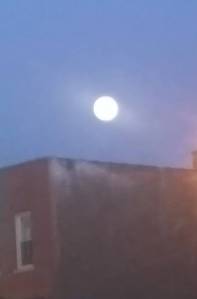
Poetry can fight like this: as not shield but sword. It can be a person’s weapon against inhumanity of the spirits, of Death, of fickle tricky Love. I wrote this poem to careless lover like whispering it to myself through a crack in the floor. It consoled me, and maybe it will make you feel a bit better, too.
You look at me and see a tree
To wipe the velvet from your horn
To you I am a gallery
A league of lovers that you will scorn
You make me into fantasy, a Lady of the Lake
Believed in as a fable to be dismissed as fake
You learned young that you should run
— Pursued by giving chase —
And secretly believed you won
Love-like lie at end of race
You’d have me play this hackneyed game
Which rubs the letters off my name
But flirty winks appease no Sphinx
My dusty wings want flame.
You were possessed by faces, by moons that fall and rise
You walked together as a crowd, mystic with your eyes
You who sweared she never cared
A feathered mask, teeth bared.
(How did I learn to like this taste? —
The pucker of a grapefruit’s pink
The final swig of coffee paste
That is difficult to drink.
I curse my mouth for going wet
Ordering the meal I get)
— D. Lineal
Fresh Art On a Hot Day On the Old Trail
Do you know unassuming Elston Avenue, which lopes through the northwest of Chicago along the river? People have been going on it since before our civilization, as a high ridge trail through the onion-y swamp, then a plank road. Today it is called after an 1830s businessman and houses a menagerie of mysterious old bulky spaces. Life has been walked into this path, and it feels like an apt locale for the type of magic seeing needed to produce art. Indeed on the 3400 block we find (looking to each other across the street) a gallery and an art school/gallery.
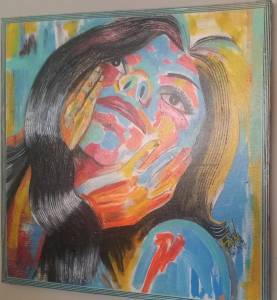
What happened at that gallery last Saturday only?
For the length of last Saturday only, Arts on Elston gallery (3446 N. Albany Ave) hosted a double exhibition sponsored by The Art House and curated by Rebecca George: the first solo show of J. Faun Manne, and also a group show of artists from the Art House advanced studio course: “WORKS ON WALLS III”. A selection of art to observe the length of this afternoon only, fringed in July sunlight slanting through the windows.
Works of J. Faun Manne numbered dozens, all of fresh 2014/5 vintage, images she netted in the dark of recent nights. In a massed crowd of Manne’s visions, we witness her mind’s eye seeing similar types of images, her heart speaking in the same palette. (A tan tea-stain color into ocher – this earthiness, this sickliness – the heart goes somewhere out in this dense band of feeling, hashed over with the distant smokiness of memory — and how this color wears blue around it!)

Images of what? Ladies, bodies, mouths, hair. Often a solitary figure, but sometimes many more. Animated in acrylic, with playful grit of texture and fabrics. Sensuality hangs heavily to the figures — their curves shoot beams. But clearly the figures are totems and not people; they do not quite live in our world.
This show commemorates J. Faun Manne’s reception of a Certificate of Fine Arts from The Art House, the art school and gallery space at 3452 N Albany Ave.
WORKS ON WALLS III, the other half of the exhibition, showcased the diverse artists of the Art House. These adult students of art study with Rebecca George, who supports the fruitful flow of their images. Their 2-D works, though of many dissimilar hands, had a coherent spirit of the passion and wholesomeness of emerging artists.

At age 80 Barbara Hopkins takes up the brush to paint realistic portraits of her grandchildren (an image of yourself from the past rendered in the hand of your grandmother and given to you by her as a gift: here is a magic object). Timothy Curtin brings wry humor, as a vision of the city in gray stripes of cloud; Bev Borum scratches in the paint, digging feelings into it with words. And Charles Echols goes between large-scale colorful abstraction, and gray-scale pop art, vectorized enough to look screen printed but in fact painted free hand. The joy and vividness of life sounded through the whole show, for this one afternoon only in the dog days of Chicago summer.
The Traveler is the Journey
 “The traveler is the journey. What we see is not what we see but who we are.”
“The traveler is the journey. What we see is not what we see but who we are.”Fernando Pessoa, The Book of Disquiet
Where does this information come from, the forbidden knowledge of your certain fate? Is it encoded in the holy chosen random-not-randomness of the cards? Was it written in lightning by a sympathetic demon?
The Rorschach Test tarot deck accurately predicts the future by causing you to perceive your own submerged secret knowledge of your future. The vagueness of the inky form embraces your vision: you transcribe the smokey shadow-figure who waits there, leaning against a wall in your mind. The seeming passivity of “reading” the ink blots belies the pro-activity of you “writing” occult information, the ink of your pen scraped from deep inside. This tarot deck tricks you to “remember” your own future, which resides inarticulately in your vast unconscious webbing.
****
I am no authority on who other people are or what they are like, but I would guess that many people would tell you that they have had convincing intuitions of their own fate. The people, I tell you, have seen and believed absolutely in visions of their future that proved to be true.
It might seem that these visions, coming before the future in time, cause the future: the dreamer dreams, and then perhaps a little bit or some day the dream gets realized. But I have come to feel that the opposite is true. The hazy dreams of the present are caused by clear knowledge of the future. The dream of the past becomes the reality of the future, sure; but the reality of the future bends back over the past and blows visions into the dreamer’s eye.
So sometimes you sense and tell yourself things you already know about your future, and depending on who you are may heed yourself or not.
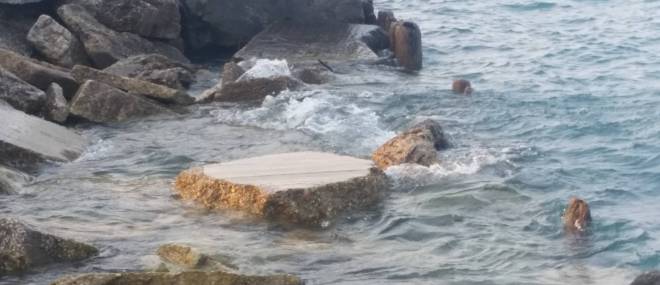
If you do not have a strong sense of what your own fate is (I’ll confess to being uncertain about my own), you should first consult your dreams about the future. What did you see yourself doing? There you will be. You will get just what you saw.
But there is pain when you look into dreams about the future. How much fantasy can represent literal future reality? At least some of it, but not most of it.
But if you dredge your mind for dreams and drag up none? I’ll confess solidarity on this score as well: my dreams have been chased off. So do we have elsewhere to look to find out what we already know about the future? Or are we auguring in our dreamlessness our future past the edge of life, out in the land of the dead? Here on the northwest side of Chicago I am scanning imagery for clues, for leaks. A tell, or a shadow of its tail. I can’t believe what is going to happen to me.
“I’ve always been an ironic dreamer, unfaithful to my inner promises.
Like a complete outsider, a casual observer of whom I thought I was,
I’ve always enjoyed watching my daydreams go down in defeat.
I was never convinced of what I believed in.
I filled my hands with sand, called it gold, and opened them up to let it slide through.
Words were my only truth.
When the right words were said, all was done; the rest was the sand that had always been.”
Fernando Pessoa, The Book of Disquiet
Delightful Folk Art Classics
Don’t try to find outsider art inside the Art Institute of Chicago. You might eventually locate the folk art gallery (secreted in a passage off a staircase) but will be certainly disappointed by the scanty and un-entertaining art it holds. You must meet the folk on Milwaukee Avenue, at Intuit Gallery.
Outsider art never felt outside of where I was. “Brut” has been the natural clacking tongue of images — of teenagers making saucy jokes in magazine collage, of loose doodle maps penciled out by introverts, of all the secret impulsive art drawn aboard all the buses of Chicago each day (only some of which could ever be Wesley Willis’). It must be almost all art made and consumed.
 I recognize it instantaneously and with joy. From here, with the Volk, the insider art is the anomaly (with its combed lines and arcane bloviations). Outsider art shepherds in all the folk, not just the crazy or those with other ways certifiable authentic naivete. In this weird world, who can be familiar enough to get all the way “inside”?
I recognize it instantaneously and with joy. From here, with the Volk, the insider art is the anomaly (with its combed lines and arcane bloviations). Outsider art shepherds in all the folk, not just the crazy or those with other ways certifiable authentic naivete. In this weird world, who can be familiar enough to get all the way “inside”?
 The images are magical: they are supposed to do something. The images have a destiny. It is not always clear why the images have appeared or what they want. They have forced themselves out through a person, and it would seem they’re not done traveling somewhere, back and forth across worlds.
The images are magical: they are supposed to do something. The images have a destiny. It is not always clear why the images have appeared or what they want. They have forced themselves out through a person, and it would seem they’re not done traveling somewhere, back and forth across worlds.

The artist may imagine they have saddled their works as “therapy,” but then, panting, they will recognize they are the ones running, blindered and whipped. And we may smirk at the artist’s contortions to catch the message (their advanced finger-painting technique), at the clarity of their subjection to their images (how charming the enslavement of Henry Darger to his world), and how we can see through the screen of their cute common media to the place where gods live. The images burn out from their hearts, lingering on the world a few human lifetimes like grey coals.
All art is up now at Intuit Gallery, 756 N Milwaukee Ave, Chicago, IL
Old King Content & The Weird Art Out There
“Content is King” they had said — so Content becomes a man, the enlightened warlock despot casting spells of letters at the world, the Vector with the logic of a field of dandelions. The “they” that says this are the enlightened graphic designers and tech types who, despite their lack of taste, engineer the Internet and spray down the world with Trapper Keeper aesthetics to trick people into buying awful products.
What if Google reworked its algorithm after the cliche “Silence is golden”, by which people encourage other people to not take up as much social space? Which is more “relevant,” the soggy blather of corporate blogs, written by unpaid intern drone adult children to feed their King the words he likes, or a irrelevant blog entry that was not even written at all? Perhaps ideally search queries should show empty pages, representing the content that was mercifully, justly, appropriately NOT imposed on the entire world via the Internet. Can’t the market reward what is not? I don’t have the answers but I’d guess the most correct response to many questions is silence.
So you can sense I am in a sour mood. Things get weird here in Chicago and I dipped into silence. I’ve seen art I loved and didn’t photograph, and I’ve missed out on some real good times. Can’t it be OK there in the void? No — the high moral logic of the Internet pleads it to be vanquished with as much tact as you can make. The evil of absence will justify the crass imposition of my perspective on otherwise ideal empty space somewhere in the Internet. Please forgive me but I must choose Good.
I’ll leave you now with the threat of my lips flapping like two wet towels in the wind, fighting this jihad against absence, and some fresh weird Chicago gallery art (uh, yes that is a complete copy of Bertolt Brecht’s FBI file on display at an apartment art show).

Meet My New Favorite Chicago Painter
A number of subjects lock together in a moment: there is feeling in the colors (horrific gobs of white paint) but also in how a cat’s head is cut from the frame. We witness a witness’s silent despair, and we see it set in a richly peopled world. The figures are crafted with rubbery whimsy, and good laughs go with the joy of reading our own lives inside the strange dynamic relationships implied by the images.
Forever Music 2015: A Mix
You know this year I’ve been sticking near the tree: climbing it for a clever view, or matching to its shade, or (especially lately) shaking the shit out of it, that some eggs and fruit might fall out for lunch. So I have been missing some things. But at least I have enjoyed setting these occluded times to very good music.
Here’s a music mix playlist of forever jams of this last half year (notably lacking in Franco Battiato and Albert Roussel) —
Bootleg Music Liquor
Last year I jailed music in my Jungian shadow and only gradually have let it out for walks around the yard. I was born from music, but had to burn the guitar and defect to the sides of images and words. These other devils should have their play, right?
 Eventually these hands down at the end of my arms found their way to the piano that’s just in the other room, and tinkled ruthlessly at it like it was some ideal cigarette, and the music jinn slipped its cuffs. And then I was toting a tape recorder out some nights, recording just a little bit of the good live music that springs in Chicago 2015 as water from the cracks of a molded stone world.
Eventually these hands down at the end of my arms found their way to the piano that’s just in the other room, and tinkled ruthlessly at it like it was some ideal cigarette, and the music jinn slipped its cuffs. And then I was toting a tape recorder out some nights, recording just a little bit of the good live music that springs in Chicago 2015 as water from the cracks of a molded stone world.
Splendorous Chicago music! I nabbed some lifted live moments of the Hecks and Coffin Ships in Pilsen on New Year’s Eve. Across the spring I gathered too Justin Fernandez, Famous Laughs, and Gula Gila, live sometimes at Situations. And a fine pointed poem, read aloud by its author, Kerry Couch, on the day it had been written (“… this is Illinois, my friend”).
Drink, drink now this bootleg slurry — a medley of sound picked out of the spring —
